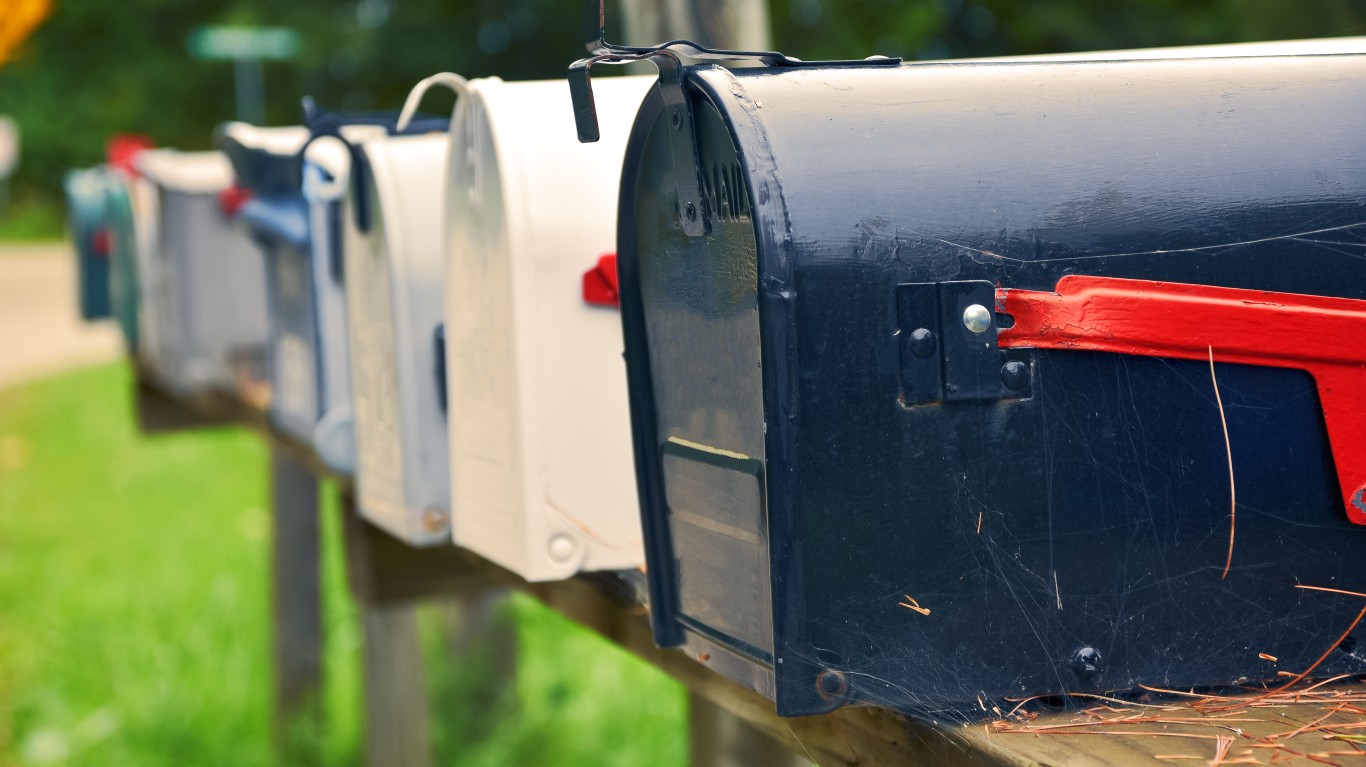
Buried among the announcements of new stamps, the U.S. Postal Service (USPS) announced it would take delivery of 9,250 Ford E-Transit Battery Electric Vehicles. The USPS has 232,00 vehicles, so it is hard to see why the decision makes any difference to the composition of its fleet. It may be because of political pressure to “green” its fleet as soon as possible. (Click here for the most fuel-efficient new trucks this year.)
[in-text-ad]
The USPS has a problem common to many electric vehicle (EV) owners, which will restrict its growth in changing its fleet from gasoline-powered trucks: “The Postal Service plans to begin building out its charging infrastructure across a minimum of 75 locations within the next 12 months, and thereafter to continue the infrastructure build out in the succeeding years at many additional facilities as a part of our delivery vehicle electrification strategy.” You cannot drive what you cannot charge. The USPS has over 32,000 locations. Hence, the “charging infrastructure” is extremely small.
Presumably, the news offers a respite from Ford’s EV problems. These have included production shutdowns of the assembly plants for the F-150 Lightning and pricing confusion for Ford’s electric pickup as well as its Mustang Mach-E.
The USPS continues to grab for positive news. It is too bloated to serve its mission. It has locations in tiny towns that do not need them. Some of these have a population of under 5,000. These were part of a legacy when people needed a post office close by.
The USPS also insists it has to deliver mail six times a week. E-mail and electronic attachments, along with the ability to buy goods and pay for them online, make this level of physical delivery unnecessary.
Private enterprises can take on much of what the USPS does. This is particularly true of services from FedEx and UPS, which have to be efficient because they are for-profit public companies.
The purchase of less than 10,000 EV trucks is not news. So why did the USPS make the gesture? It has to justify what cannot be justified.
100 Million Americans Are Missing This Crucial Retirement Tool
The thought of burdening your family with a financial disaster is most Americans’ nightmare. However, recent studies show that over 100 million Americans still don’t have proper life insurance in the event they pass away.
Life insurance can bring peace of mind – ensuring your loved ones are safeguarded against unforeseen expenses and debts. With premiums often lower than expected and a variety of plans tailored to different life stages and health conditions, securing a policy is more accessible than ever.
A quick, no-obligation quote can provide valuable insight into what’s available and what might best suit your family’s needs. Life insurance is a simple step you can take today to help secure peace of mind for your loved ones tomorrow.
Click here to learn how to get a quote in just a few minutes.
Thank you for reading! Have some feedback for us?
Contact the 24/7 Wall St. editorial team.


